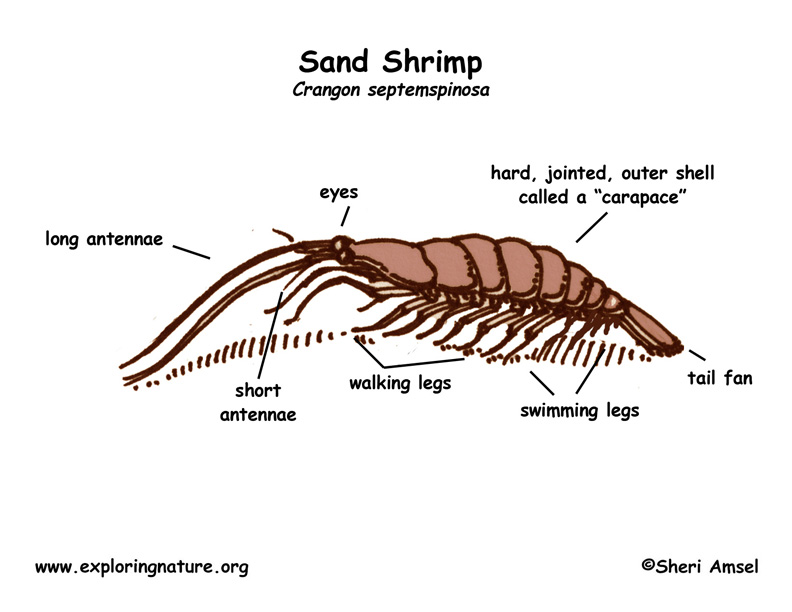

Shrimp are found in all the world’s oceans, as well as in freshwater lakes and streams.
They live on the seabeds, often in shallow tidal pools.
Shrimp are in a group of animals called “crustaceans.” This means instead of a backbone, they have a hard outside shell (exoskeleton). They are like crabs and lobsters, but their bodies are flattened from side to side and they have a hook shape. They have two pairs of antennae that can sense both taste and touch. They have 13 pairs of legs. The front 3 pairs are used for feeding (called maxillipeds), the next 5 are for walking (called pereiopods), and the last 5 that are on the abdomen are swimmerets (or pleopods). They can grow to be almost 3 inches long (7cm).
They are active at night (nocturnal) feeding. During the day, they burrow into the sand.
They eat small ocean animals (invertebrates) and plants.
Females lay up to 15,000 eggs in a bunch under her tail. The eggs hatch and the larvae drift away. They grow and shed their hard outer skin (molt) over time. As they grow, they change into their adult form (metamorphosis).
Kingdom: Animalia
Phylum: Arthropoda
Subphylum: Crustacea
Class: Malacostraca
Order: Decapoda
Suborder: Pleocyemata
Family: Crangonidae
Genus: Crangon
Species: C. septemspinosa
When you research information you must cite the reference. Citing for websites is different from citing from books, magazines and periodicals. The style of citing shown here is from the MLA Style Citations (Modern Language Association).
When citing a WEBSITE the general format is as follows.
Author Last Name, First Name(s). "Title: Subtitle of Part of Web Page, if appropriate." Title: Subtitle: Section of Page if appropriate. Sponsoring/Publishing Agency, If Given. Additional significant descriptive information. Date of Electronic Publication or other Date, such as Last Updated. Day Month Year of access < URL >.
Amsel, Sheri. "Shrimp (Sand)" Exploring Nature Educational Resource ©2005-2024. December 13, 2024
< http://www.exploringnature.org/db/view/542 >

